Architecture Professor, Students and RI Audubon Society Construct Art with Ecological Purpose
Assistant Professor of Architecture Leonard Yui and his students collaborated with Scott Ruhren, Senior Director of Conservation at the Audubon Society of Rhode Island, to create an environmentally conscious art installation at the Touissett Marsh Wildlife Refuge in Warren
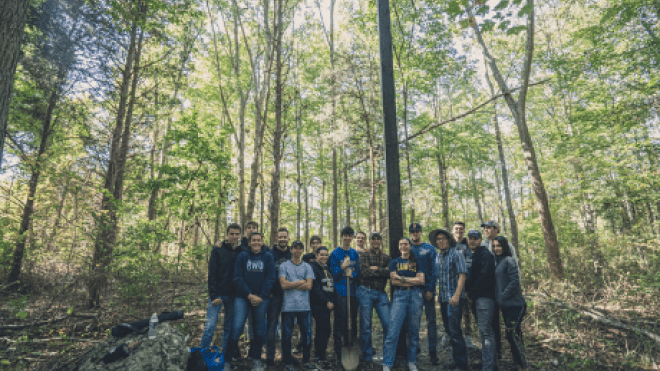
Walk along the tree-lined path at the Touisset Marsh Wildlife Refuge and you may not notice anything unusual. But take a closer look –– some of the trees are not trees at all, but twenty-foot piers made of blackened wood.
The art installation, 5 Ecological Piers, was created last summer and fall by Assistant Professor of Architecture Leonard Yui, Senior Director of Conservation at the Audubon Society of Rhode Island Scott Ruhren, and several RWU architecture students.
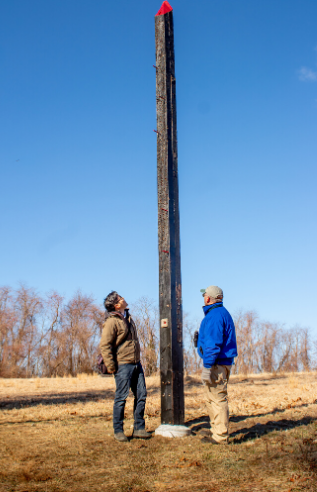
This partnership began when Ruhren visited Yui’s Urban Ecology class to teach his architecture students about the species and challenges of the region. Together they completed a project using recycled pallets for flower beds. The close proximity of the beautiful Warren refuge to RWU presented another opportunity for Yui and his students to foster this reciprocal relationship with the local community.
“There’s a lot of habitat in a small spot,” Ruhren said. “At 66 acres, we have fields, forest, salt marsh, freshwater streams. It’s a lot like Rhode Island — a small spot with a lot of stuff in it.”
The team used their combined skills in design, construction, technology and ecology to construct an interactive experience that educates visitors about the past, present and future of our environment. Every aspect of the installation is intentional, serving an ecological, conceptual and aesthetic purpose.
The holes drilled into the surface of each pillar for instance, are actually quotes from key environmentalists of the 20th century, translated into Morse Code — a language chosen because it was an early iteration of digital communication. To implement this concept, Yui enlisted junior architecture major Mason Calise who had experience with Computer Numerically Controlled (CNC) machines that could translate information from a computer program onto a physical material like wood.
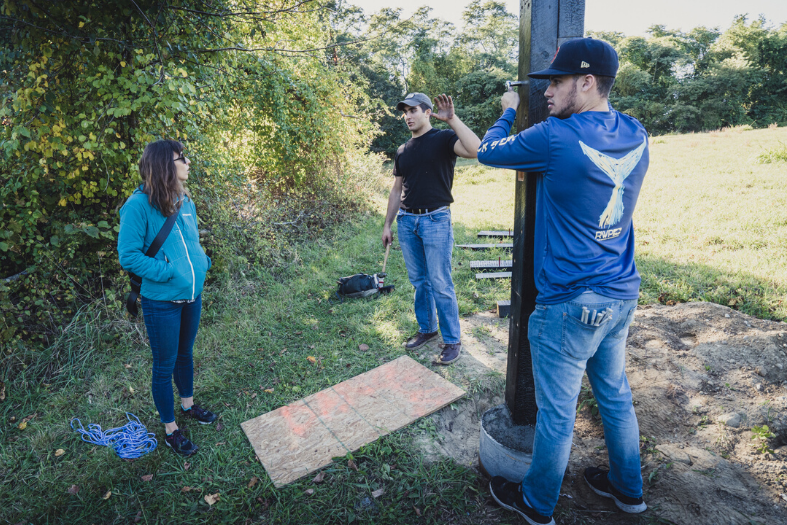
“When [Yui] reached out to me, I had only really done a handful of projects using this machine, and by now I’ve learned so much more,” said Calise, who minors in art and architectural history and construction management. “I’m in the architecture field because I enjoy problem solving and here I could actually apply the skills that I’ve gained over the past two years to something that was being built.”
Just like most elements of the project, even the individual drilled holes have an ecological use.
“The holes have been sized and calibrated to accommodate native bee populations,” Yui said.
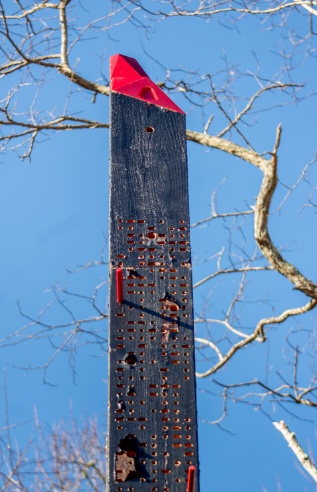
Protruding from the pillar are several red rods, which are actually perches for local birds. But they also represent the periods and commas and semicolons that break up the quotes.
The pillars themselves are made from local white pine, recycled from a Massachusetts housing development project.
“We purposefully did that because we wanted to connect this project to this location by way of materials,” Yui said. The wood has been blackened using a Japanese charring technique, that both preserves the material and creates a subtle, yet intriguing aesthetic.
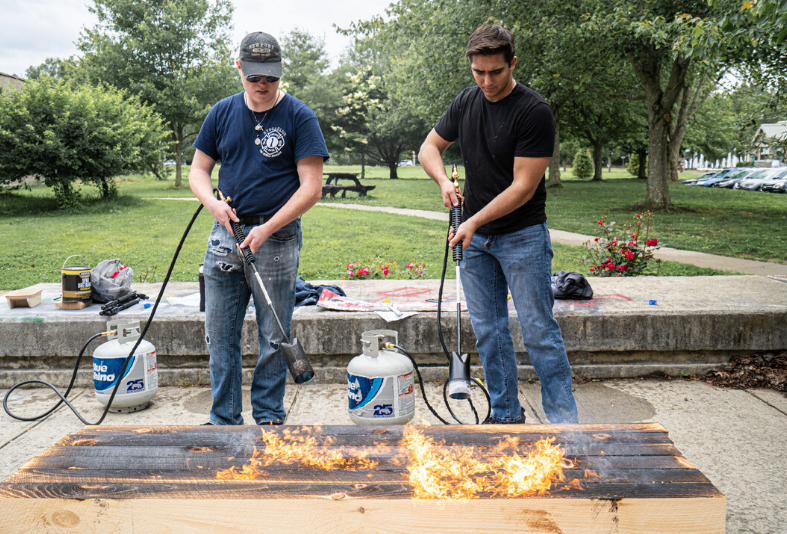
The height of the piers is intentional too — it represents sea level rise. In the future, the team will add markers to show visitors how high the sea levels will rise in 2050 and 2100.
"You first come to the refuge to appreciate the refuge, but then this idea of sea level rise hits you in the face," Ruhren said. "The piers indicate where the water could possibly be, which is pretty scary. That's how important this area is, because it's going to absorb that water."
They will also be adding QR codes to the pillars so visitors can use their phones to scan them and access the quotes. This is an effort to bring longstanding environmental ideas into the modern world, combining the old with the new and connecting to multigenerational audiences. Though at first, younger visitors may not recognize the early environmentalists like John Muir and Rachel Carson, the interactive nature will draw them in and they’ll see how much their ideology still applies today.
“There’s a lot of contemporary theories that they were talking about back 100 years ago,” Yui said.
Skyler Moncada, a second-year master of architecture student, played a huge role in the fabricating the structures and developing the QR codes. He described a modern take on experiencing the 5 piers:
“The way you interact with it is sort of like how you would a video game where a lot of the time you are exploring around in this different world and you come across this thing that seems not of this world. It draws you in and makes you want to interact with it. That’s really important because it is a project that has an underlying and overlying ecological message.”
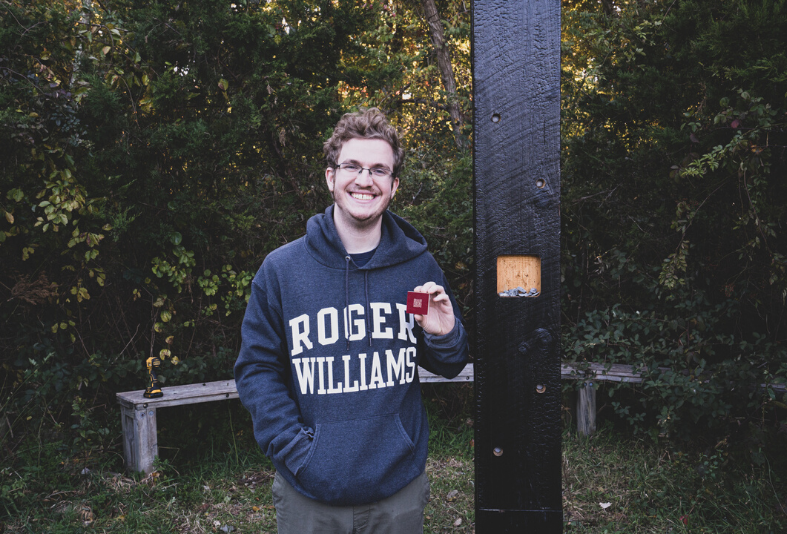
During the installation process, the students honed their technical skills and practiced new, sustainable techniques but it was the reaction from neighbors and visitors that really helped them realize the magnitude of their work, Yui said. The refuge is well-loved by the local community, so naturally the project garnered attention.
“A lot of people, even when we were just putting up the original pillars, were walking on the trail and were like, ‘What is this? What’s going up? This is amazing!” Moncada said.
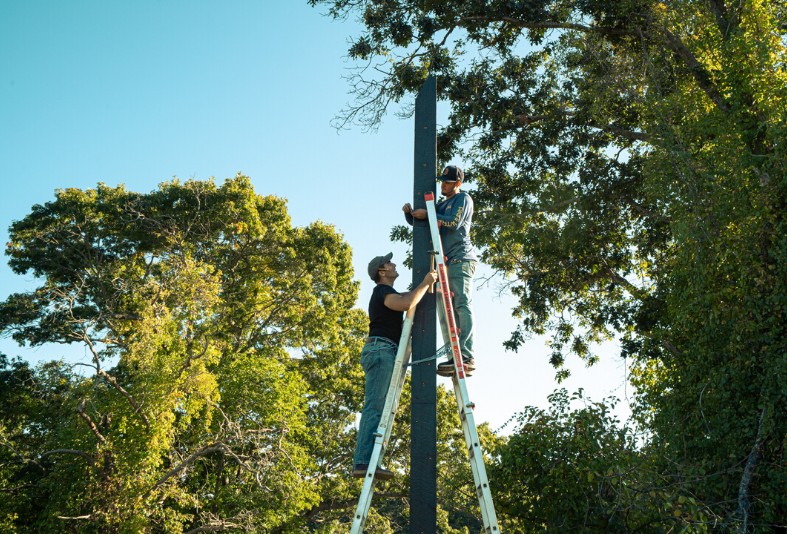
However, one neighbor was initially displeased with the new structures, worried that they would hinder his view or his enjoyment of the wetland. After learning more about the scope of the project, he had a change of heart.
“He went back and reflected on it and actually wrote [Yui] this very nice email sharing his understanding and gratitude for the project," said Moncada. “There’s clearly some sort of draw that’s magnetizing people to it, which is the sign of a successful project.
This interaction, among many others, helped the students see the bigger picture of their work.
“It added to the realization that they were part of something very important,” Yui said. “People have very passionate views, which is why these areas are protected. We need to prepare designers to engage with these places more actively. We can create designs that can benefit the environment.”